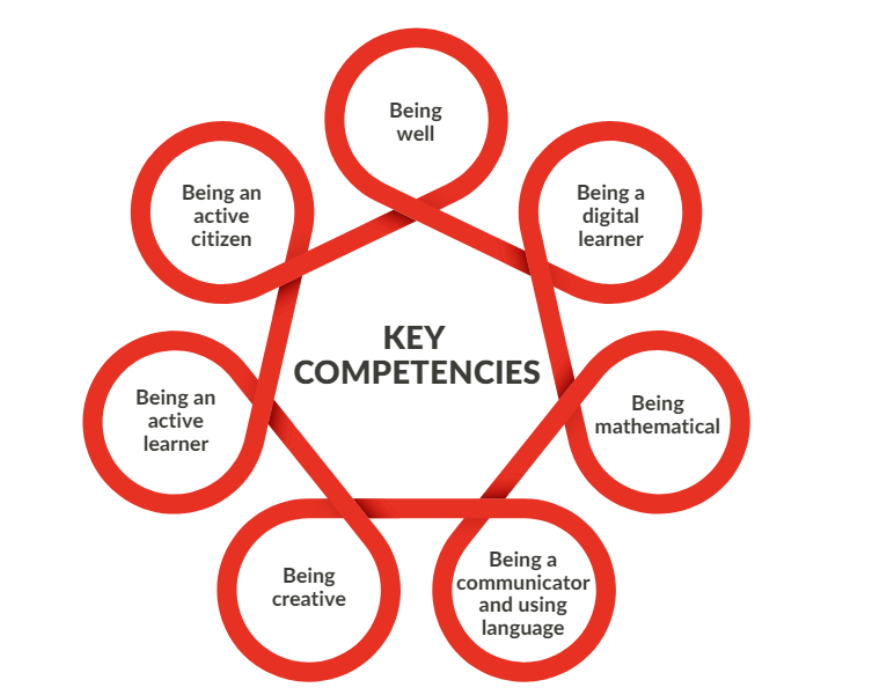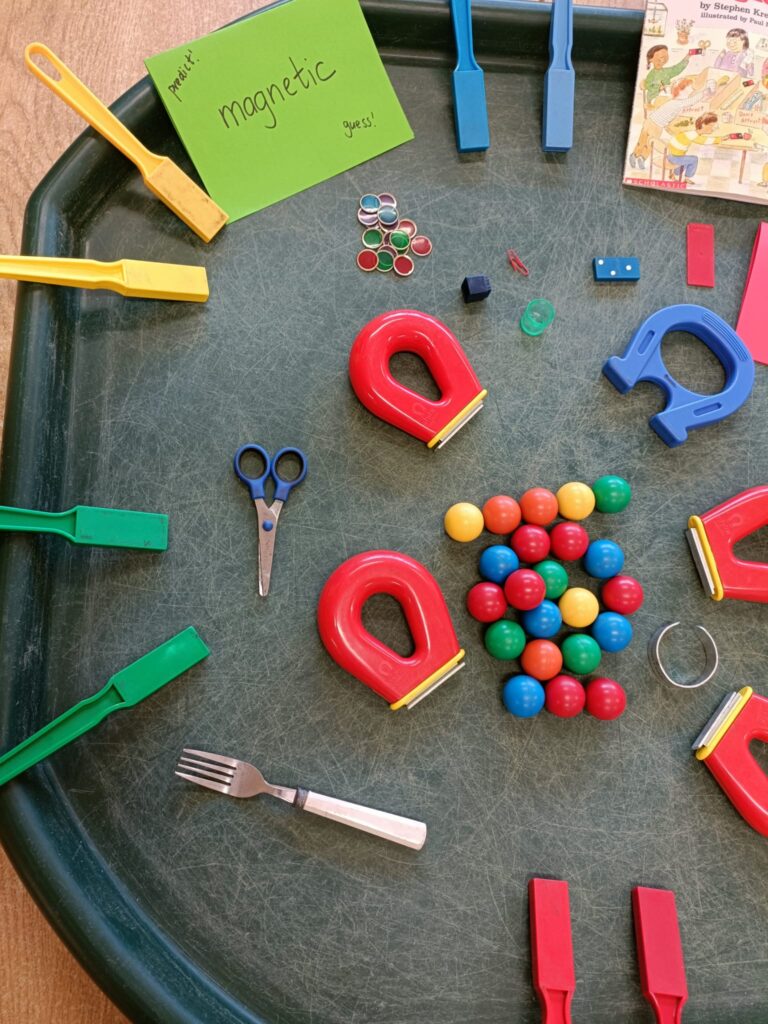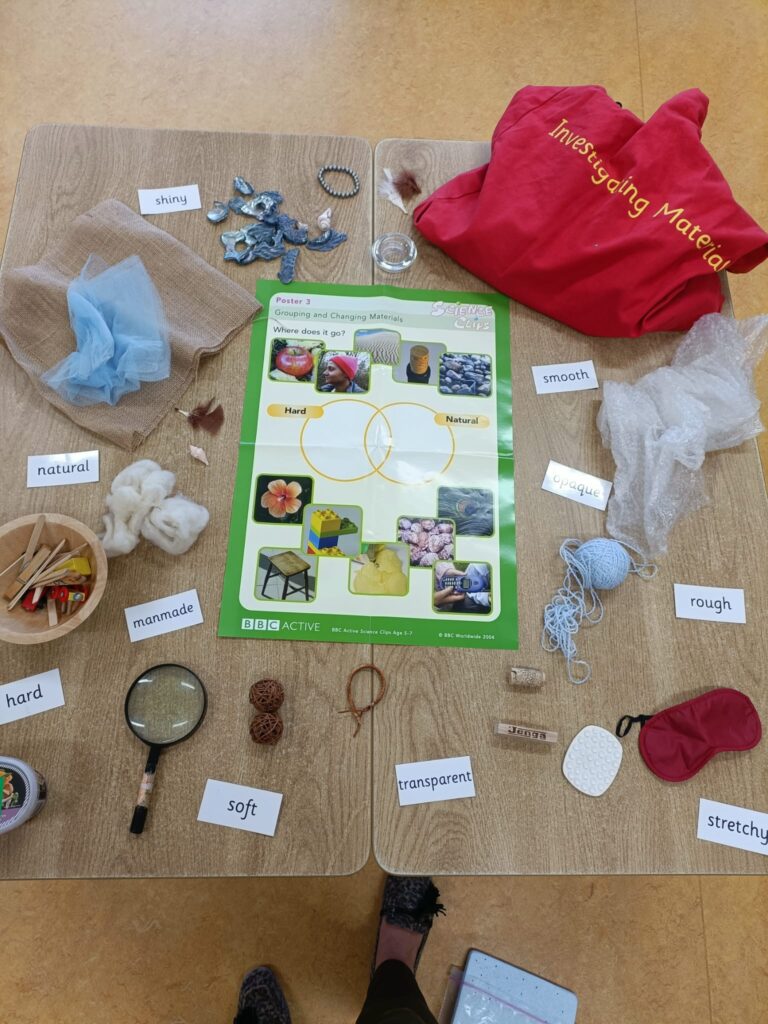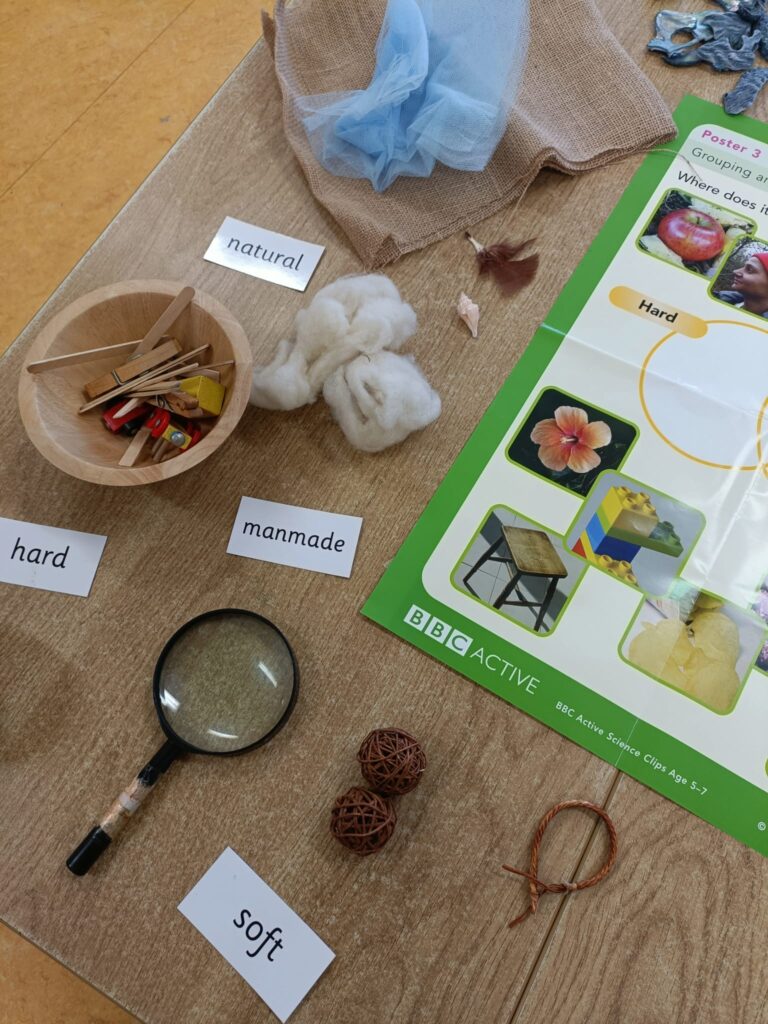Teacher author, Aoife, explains how she has used Discovery Tables in her classroom to approach some of the key ideas laid out in the new Primary Language Framework.
Our new Primary Language Framework emphasises the importance of the pupils as active agents in their learning. We can all agree that children learn best when they are inspired, engaged and active in their learning.
Discovery Tables are a fantastic way to develop many of the key competencies outlined in the new framework. Discovery tables help children to be active learners, to be mathematical, to be creative and to communicate. When working at a discovery table, pupils will access it at their own level. This enquiry based learning will help them to develop critical thinking, while working collaboratively.
Here is the outline from Page 10 of the document. I keep a printed copy near my desk. It is useful reminder for me of ways I can steer classroom discussions and children’s questions as they come up.

Discovery Tables don’t have to be complicated – hands up if you remember the nature table from your own school days! You can have a discovery table that is thematic, seasonal or curriculum based.
Here are some examples of the Discovery Tables from my classroom for exploring materials. Are they magnetic? What is natural? What is man made?



Here are some key points to consider when putting together a discovery table:
- Set boundaries. Explain to the pupils the rules around using the discovery table. You may want to discuss when it is appropriate for the children to visit the table, how many pupils can be at the table at the same time, working quietly at the table and respecting the materials.
- Make it open ended. Include a task for pupils to complete. Include some open ended questions about the theme/items.
- Link it with literacy. Add labels to items on the desk. Add some relevant topical books from your class or school library.
- Make it interactive! Include magnifying glasses, post it notes, clipboards and writing materials. This will encourage the children to really get to grips with the topic at hand. Encourage children to bring in items from home/from nature for the investigation table.
- Embrace the mess! Your discovery table may not look Pinterest perfect and that is A-ok. Mess is a sign that the children are actively engaging with the materials.
- Leave a question box. Pupils can put questions in the box to springboard future learning opportunities.
- Sharing is caring! If the teacher next door to you is studying a similar topic around the same time, you could agree to each choose a topic to assemble a discovery table. You can then swap materials – a great time saver.
Here’s a display sign you could use for your discovery table.


Leave a Comment